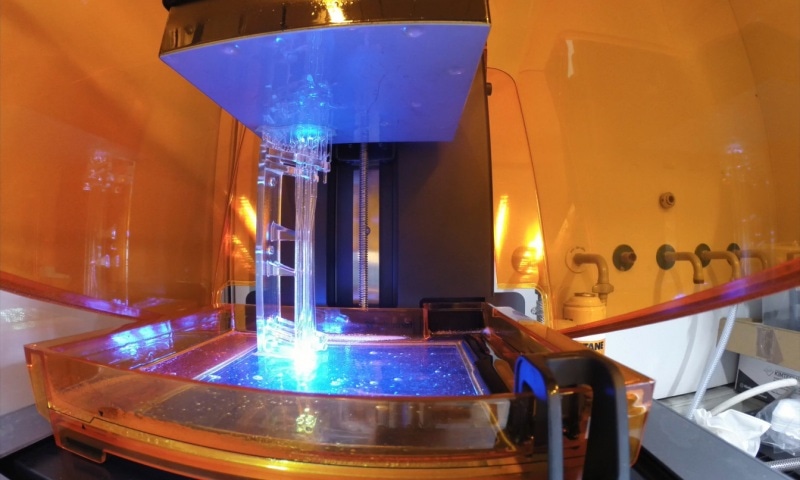May 2 2017
As a 3D printing enthusiast, you may be very focused on what the technology can do for you at the desktop—as well as being continually wowed by all that is happening in a wide range of industries.
 The 3D printer used in this study. [Image: A.Osterwalder/EPFL]
The 3D printer used in this study. [Image: A.Osterwalder/EPFL]
There’s so much happening behind the scenes though. And while that often seems to be the case in the world of science, it’s always fascinating when we are able to catch a glimpse of what researchers are working on.
Currently, scientists at EPFL’s Institute of Chemical Sciences and Engineering are putting 3D printing to the test for furthering spectroscopy, a method of splitting beams of light and then measuring them. For research, better tools are needed for splitting those molecule beams. Using 3D printing and electroplating, the team has created a new type of electrode that can manipulate the movement of the molecules while they are in a vacuum.
Sean D.S. Gordon and Andreas Osterwalder discuss their research in ‘3D-Printed Beam Splitter for Polar Neutral Molecules,’ recently published in Physical Review Applied. They explain that the new electrode is created by 3D printing a plastic piece and then electroplating a metal layer on top. While electroplating is a technique used for many other applications (automotive, plumbing, jewelry), this is a first for this type of unique scientific application.
“Our beam splitter is an electrostatic hexapole guide that smoothly transforms into two bent quadrupoles,” state Gordon and Osterwalder in their abstract. “We demonstrate the correct functioning of this device by separating a supersonic molecular beam of ND3 into two correlated fractions.
It is shown that this device can be used to implement experiments with differential detection wherein one of the fractions serves as a probe and the other as a reference. Reverse operation would allow the merging of two beams of polar neutral molecules.”
Galvotec, headquarted near Zurich, worked with the scientists by taking the 3D printed pieces and pre-treating them with a conductive layer so they could then be electroplated—with some areas of the devices being metallic and conductive, and other parts insulating. Many of the benefits of 3D printing are at play in this project, creating low-cost surfaces that are smooth and allow for precise alignment, offering much faster production time (at speeds of 50-100 times faster), and a progressive workflow that is completely digital.
The method that the EPFL team is using is expected to apply to many other experiments and applications as well.
“This fabrication method opens a plethora of avenues for research, since 3D printing imposes practically no limitations on possible shapes, and the plating produces chemically robust, conductive construction elements with an almost free choice of surface material. It has the added advantage of dramatically reduced production cost and time,” state the researchers in their paper.